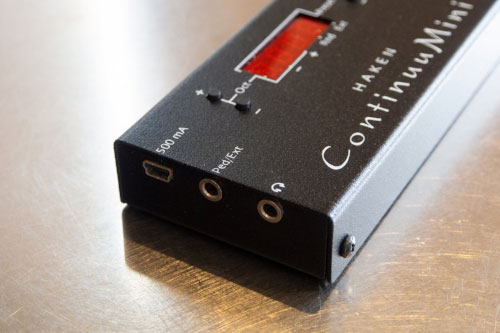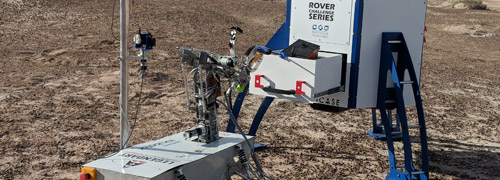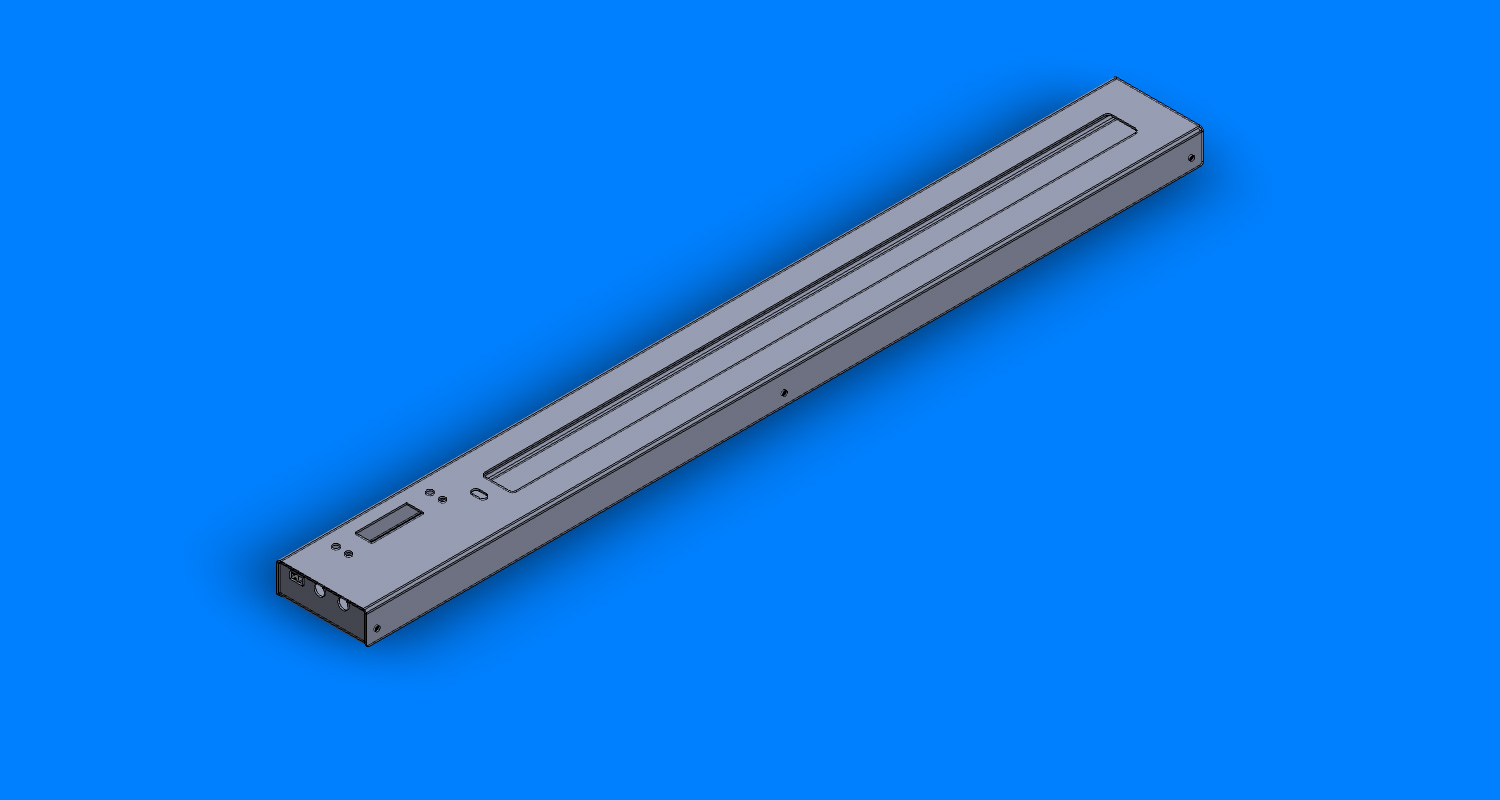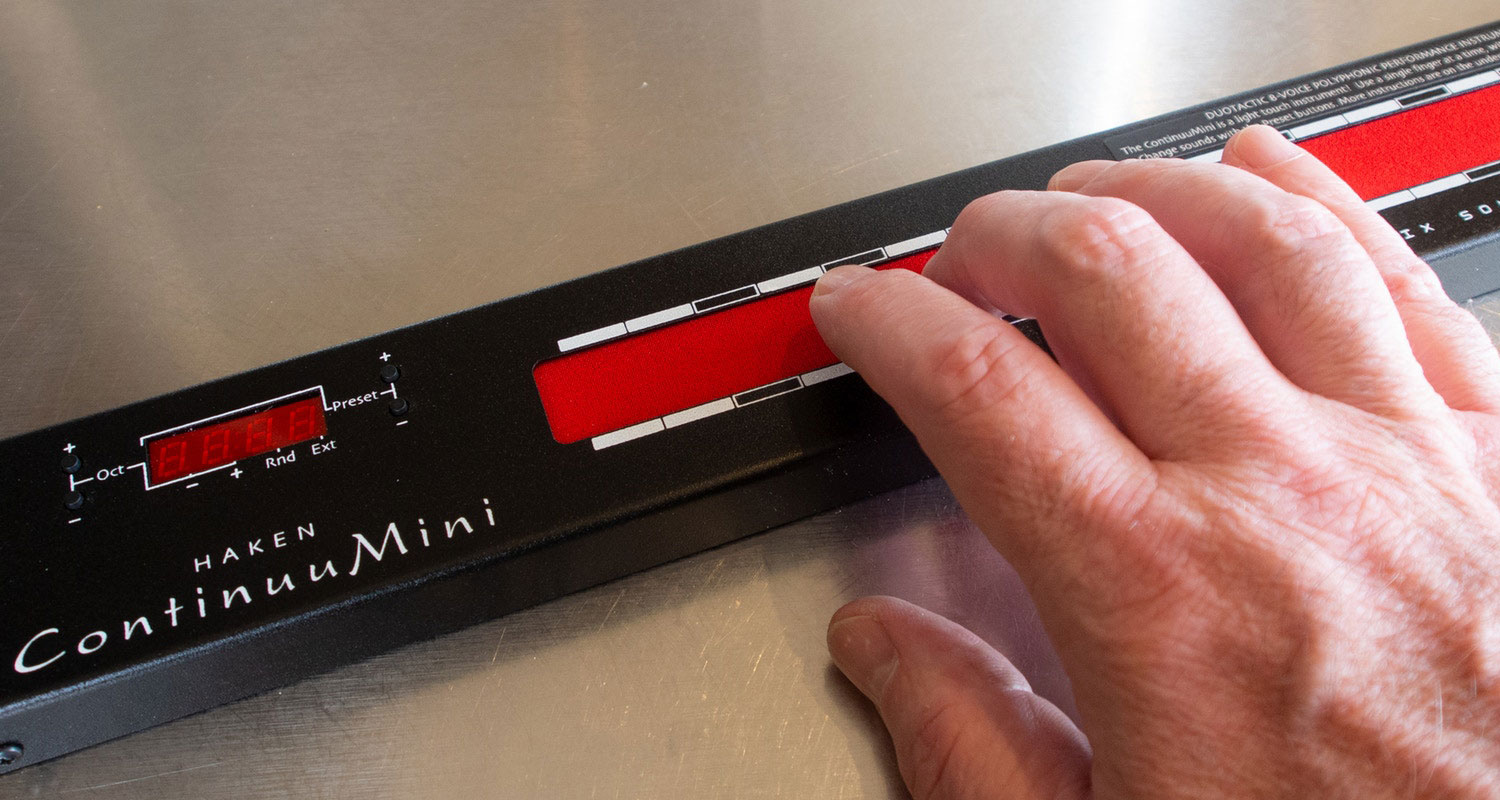When Lippold Haken came up with the design for the Continuum Fingerboard in the early 1980s, his goal was to take the traditional keyboard synthesizer, and make it much more expressive and flexible.

The end result of his idea was the Continuum Fingerboard by Haken Audio, which first hit the market in 1999. The Continuum functioned similarly to a keyboard in its ergonomics when playing, but it allows far greater control thanks to its ultra-sensitive, three-dimensional touchpad which is integrated into the proprietary EaganMatrix software.
Haken Audio's second iteration, the ContinuuMini, took all of the unique qualities of the Continuum Fingerboard, but made it much smaller and portable, all with the help of Protocase's design services and custom manufacturing.
The Continuum - and How it Works
Measuring 54 inches long, the Continuum Fingerboard is similar in size to a full-length keyboard. It also has a half-sized option that measures in at 28 inches in length. Both boards feature a touch sensitive neoprene playing surfaces with hundreds of precision-machined rods, springs, magnets and Hall-effect sensors underneath. These parts all work together to measure the pressure and movements of the musician's fingers while playing.
The Continuum allows the musicians unprecedented control over the sounds they are making by moving their hands not only across the playing surface to play different keys, but also upwards and downward pressure each causing different modifications.
"The Continuum Fingerboard was designed to be as expressive and as rewarding to play as an acoustic instrument," explains founder Lippold Haken. "The Continuum Fingerboard's electronics collect several kBytes of sensor data per millisecond to capture the player's finger movements on its playing surface; that data is used to continuously control low-level sound synthesis parameters."
Both the full-size and half-sized Continuum Fingerboards are professional tools, with the quality and price tag (ranging up to US$5,670) to back it up. They have been used in the production of some of the biggest television, film and video game soundtracks, including Game of Thrones, Indiana Jones and the Crystal Skull and World of Warcraft.

Big names in the music industry know and love the Continuum, including Nine Inch Nails founder-turned Academy Award-winning film composer Trent Reznor, and The Who's legendary guitarist Pete Townshend.
Townshend raved about the Continuum Fingerboard, "I absolutely adore it, it's a superbly expressive instrument. The Continuum is already inspiring me to new ideas."
ContinuuMini
While the Continuum wowed professionals in the music industry across many different genres, some people longed for an inexpensive, entry-level Continuum that was still as fun to play and retained the same sound quality as the bigger fingerboards, but allowed better portability. At the 2018 ContinuuCon (the annual convention for the board where musicians come for workshops and concerts), Haken Audio announced a Kickstarter for the new miniature version of the Continuum.
Later that year, the ContinuuMini made its debut. Measuring 20.9 inches long, the ContinuuMini clocks in at a tiny 0.25kg, which is one-twentieth of the weight of the full-sized Continuum. In order to pack all of the touch-sensitive expressiveness of the Continuum into such a small chassis, it features a different playing surface and sensor setup.
The ContinuuMini's play surface has red nylon over a thin layer of neoprene, covering a ribbon attached to a movable aluminum plate. The moveable plate is supported by two piano wire springs with magnets at each corner. It uses only 4 Hall-effect sensors to track the movement of the plate, compared to the numerous sensors in the big brother boards.
The ContinuuMini is complete and self-contained, requiring only USB power and an audio output. It also has the same unique sound engine (the EaganMatrix) as its bigger iterations, except the software was custom built to perfectly suit the Continuum's playing surface.
Design
When coming up with the design for the ContiuuMini, Haken knew it had to be less expensive than their other products, while still retaining the accuracy, durability and speed of the full-size fingerboard. To help achieve those design requirements, Haken reached out to Protocase while he was still in the prototyping stage to manufacture the chassis for the ContinuuMini.
"Last year we had made some prototypes with Protocase, and perfected the design before our Kickstarter campaign," explains Haken. "I provided design sketches to Protocase engineers, as well as STEP files for electronics circuits that need to fit inside the products. Protocase engineers produced professionally dimensioned drawings and 3D models for me, and have helped me avoid errors in my designs. I have been extremely pleased with the results."
Haken heard of Protocase after searching online and decided to use their services because they checked all the boxes Haken Audio needed out of their supplier.
"Consistency, delivery time, and workmanship are the most important considerations in choosing a supplier. We chose Protocase because Protocase's quality of workmanship is important in the high-end electronic music instrument market," says Haken. "Musicians might spend eight or more hours each day at instruments I build."
A New Addition to the Continuum Family
At the National Association of Music Manufacturers trade show in Los Angeles in January, Haken Audio officially revealed its latest instrument - the Slim46 Continuum, which features a 46 half step range in playing area.
The Slim Continuum, says Haken, is virtually the same playing experience as the other Continuum models, however it is significantly slimmer, measuring a mere 1.2" high. Its diminutive height means it can fit on multiple keyboard stands more easily than thicker models. The Slim Continuum features a built-in display and additional buttons, which are most useful for on-stage performances, rather than studio use.
As with other previous Continuum models, Haken Audio continues to harness Protocase's quick-turn custom manufacturing in order to produce the enclosures for the SlimContinuum.
"It is extremely useful that Protocase engineers can import STEP files for the printed circuit boards I install in the enclosure," says Haken. "Everything fit perfectly when I got the first prototype, because Protocase engineers had found and corrected several dimensional errors I had made."
Haken Audio is now accepting pre-orders for the Slim46 Continuum, as well as a Slim70, with shipping expected to begin in summer 2020.


